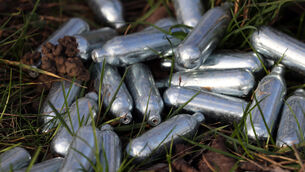Turn unused dump into knotweed disposal site: Councillors

The Bottlehill ‘superdump’ in Cork remains unused despite costing some €48m to develop, but yesterday’s meeting of the county council heard that using it to dispose of Japanese knotweed could save developers the cost of having to transport the invasive species to sites in other parts of the country.
Planning permission was submitted last month for a Japanese knotweed processing plant in a disused quarry at Ballyhaunis, Co Mayo.
However, Fine Gael councillor Gerard Murphy said the expense of transporting the plant from affected building sites to deep landfill sites elsewhere is “adding considerably” to the cost of building new homes.
The motion found support from across the chamber at yesterday’s meeting.
Independent councillor Marcia D’Alton said communication with the public on the invasive species emphasises the need to treat and dispose of it carefully, and yet Cork has no site for this.
Fine Gael councillor Kay Dawson said she believes the local authority has a duty of care to the public in tackling the increasing Japanese knotweed issue, and that it would be more mindful of this responsibility if it were to take charge of the problem by having it processed at the Bottlehill site.
Independent councillor Kevin Conway said the problem is not exclusive to new builds, and revealed that he is having difficulty tackling the plant near his home.
Ted O’Leary, the senior executive officer for the council’s Environment Directorate, confirmed previous reports that the local authority is currently assessing a proposal for a wind farm on the Bottlehill site.
While the economy has improved and there is certainly an increased demand in relation to construction and demolition waste, there remains no indication of a changed waste market in relation to Bottlehill. Its potential use as a facility for the disposal of Japanese knotweed or other invasive species would not increase its market viability,” he said.
“Under current waste regulation the only available off-site disposal outlets for Japanese knotweed waste are lined EPA-licenced landfills or incineration.”
However, Mr O’Leary did indicate that the disposal of the plant, and the increasing demands of other construction waste, are under consideration.
“It is acknowledged that increasing development activity has created an increased demand for construction and demolition waste facilities,” he said. “Demand for the disposal of Japanese knotweed or other invasive species at landfill arises almost exclusively from construction activities and, as such, the material can in this context be considered a form of construction and demolition waste.”
Mr O’Leary said the council has asked the Southern Region Waste Management Office to look at the issue as part of wider initiatives on the assessment of capacity for construction and demolition waste. He also reiterated that the on-site treatment of Japanese knotweed is the preferred method of tackling the plant from a bio-security point of view.
The Bottlehill proposal is to go to the council’s Environmental Strategic Policy Committee for further consideration.












